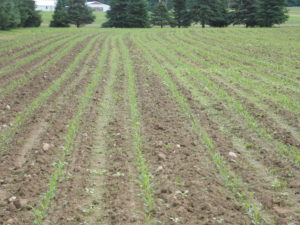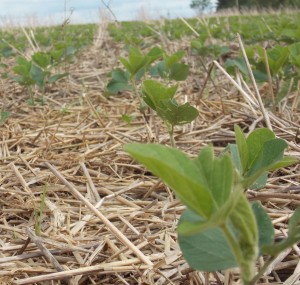We have much more to do and your continued support is needed now more than ever.
Researchers Recognize Conservation Agriculture’s Benefits
Recently, agronomists at North Dakota State University released new fertilization recommendations for corn. Normally, this isn’t news. Land grant universities have been providing fertilizer recommendations for years and also periodically update them based on new research. So what is the big deal this time? For the first time, a land grant university has recognized the benefits of a conservation practice to productivity and is changing recommended fertilizer rates accordingly.

With the updated NDSU fertilizer guidelines, researchers have begun to correct those assumptions. Not only did researchers develop fertilizer rates for producers using no till, the rates indicate that soils do in fact respond differently to different practices. How else does one explain the fact that NDSU gives long term no till a 60lb. nitrogen fertilizer credit on corn and 50 lb. nitrogen fertilizer credit going into small grains?
The credit reflects not only the higher soil organic matter in no till soils, after all, it doesn’t get lost due to tillage, it also reflects higher levels of microorganisms vital to aiding soil in storing nutrients, but also converting them to make them available to crops. Producers gain more productive soil while reducing their operating costs (in both fuel, equipment time, and now fertilizer). These new fertilizer rates will save producers over $35 per acre, just for using long term no till.

This is a great step in the right direction. I encourage other land grant universities to follow NDSU’s lead and update their fertilizer guidelines to recognize for the improved nutrient holding and delivery capacity of soils under long term no till. In fact, don’t stop there. Other practices, not just no till, improve the soil’s productivity. Cover crops and diverse crop rotations also boost soil organic matter and soil microbe populations vital to a healthy and productive soil. And like adding no till, cover crops and crop rotations provide numerous benefits from wildlife habitat to carbon sequestration to water quality.
http://www.producer.com/2014/08/new-guidelines-reflect-benefits-of-no-till-farming/
Become a Wildlife Gardener
![]() Become a Wildlife Gardener with NWF. It’s free and you’ll get great wildlife gardening tips and learn how to certify your garden as an official habitat.
Become a Wildlife Gardener with NWF. It’s free and you’ll get great wildlife gardening tips and learn how to certify your garden as an official habitat.




















